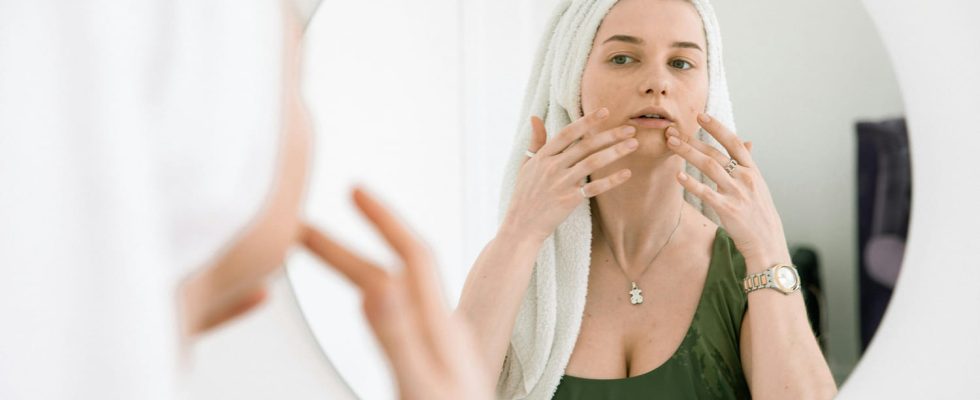Patches against pimples and other imperfections have been a hit on social networks in recent months. On TikTok, no less than 43,000 videos are devoted to it. But what is this new beauty trend really worth?
With the arrival of spring and the first rays of the sun, anti-blemish patches targeting pimples in particular have never been so popular. On TikTok, the varieties are surging: sometimes classic, sometimes presented in a more playful and colorful aspect (emoji, flower). In recent years, we have seen a real explosion in acne which not only continues to affect adolescents, but also some adults. Questioned by Le Journal des Femmes, Cyrille Telingefounder of Novexpert and expert in skin biochemistry, answers your questions on the subject.
Anti-blemish patches: how does it work?
Far from being reserved only for adolescents, acne persists today in more and more adults. The causes of this increase are still uncertain: some point to stress, others to poor diet, prolonged exposure to the sun, or even ambient air pollution, all of which can cause inflammatory acne. Faced with this resurgence, cosmetics has redoubled its ingenuity to offer targeted solutions. Less abrasive than a peel, anti-blemish patches act directly on the inflamed area, treating it in depth. Note that they are designed to treat different types of skin pimples: acne pimples, heat pimples, stress pimples, pregnancy pimples or aging pimples, even if its effectiveness is better on pimples at the beginning of formation.
So what is their benefit compared to anti-acne products already on the market? Anti-pimple patches, also called hydrocolloid patches, have two facets, explains Cyrille Telinge, acting on both the outer layer and the inner layer of the epidermis. First, they will absorb excess sebum by drawing the contents of the pimple outward to trap it in a purifying gel. Secondly, the patch will reduce the oxygen supply to the targeted area to increase the penetration of the active ingredients into the skin without irritating it, thus maximizing their effects. Third advantage: the presence of hydrocolloid in the patch which will preserve the humidity around the pimple, helping it heal. “Good healing always requires a fairly high humidity level” recalls the specialist.

How to choose patches suited to your skin type?
On social media, new patches emerge every day and it can be difficult to know which ones are suitable for our skin. “The first things to look at when choosing a patch are the assets”, explains Cyrille. There are different types, but a successful patch is generally made up of three elements: a exfoliating active which will help treat and purify the pimple (AHA, BHA and PHA), a moisturizing active ingredient or softener, preventing skin irritation and a bactericidal active with cleansing properties. If you have real inflamed spots, choose patches reinforced with salicylic acid, tea tree oil or retinol. On the other hand, if you have sensitive skin, opt for gentler formulas coupled with numerous moisturizing active ingredients (hyaluronic acid, niacinamide, aloe vera, polyglutamic acid, provitamin B5).
When to use anti-pimple patches to maximize results?
Anti-blemish patches are mainly used on raised pimples at night. For this, a good prior cleansing is essential: focus on a gentle double cleansing (preferably with an oil cleanser then a foamy cleanser) then gently dry your face. All you have to do is apply your patches to your clean skin and leave it on overnight. The next day, remove them and that’s it. However, be careful not to apply the patches too often or leave them on for too long to avoid damaging your skin, continues Cyrille. Once the cleaning and purification operation has been carried out, the healing must take place. So, when you notice a slight retraction of the skin, the color of the spot changing from red to pink, it means that healing has started and you should throw away your patch. “You don’t need to wait for the pimple to turn white to remove it, the job is done”. concludes the expert.
